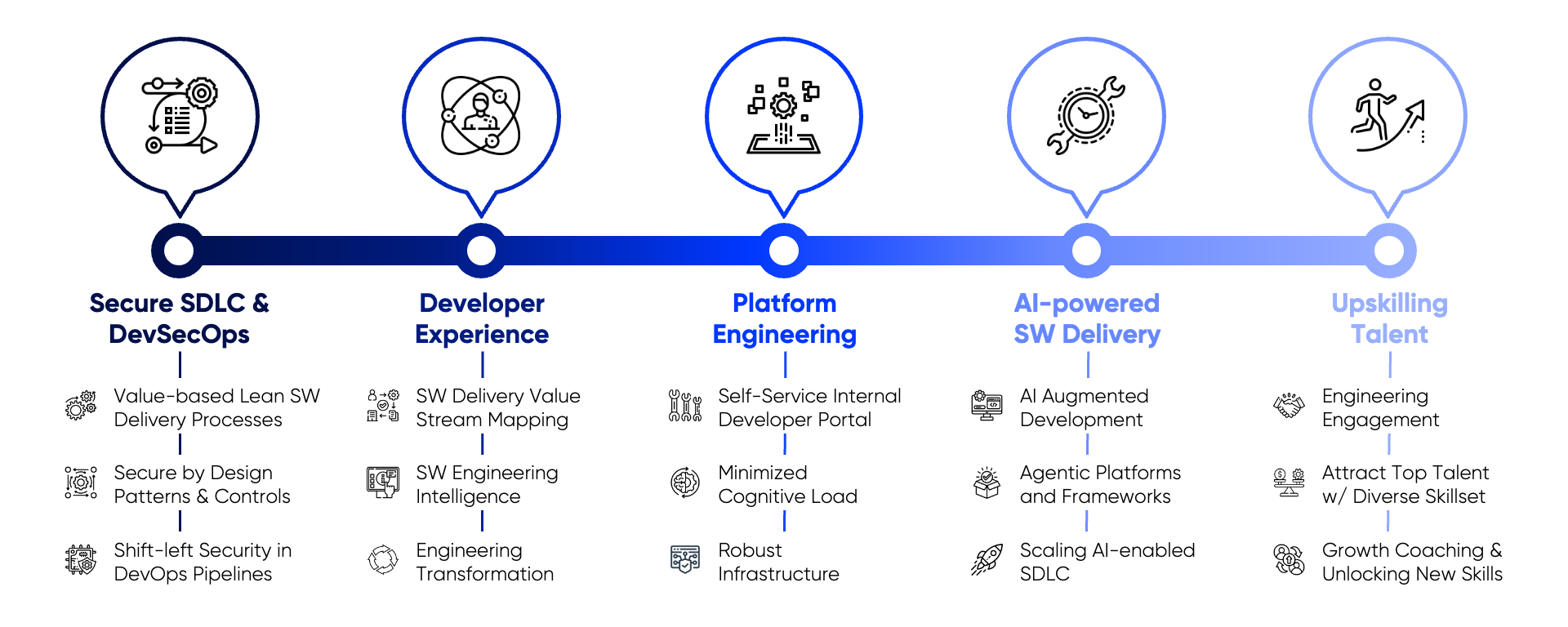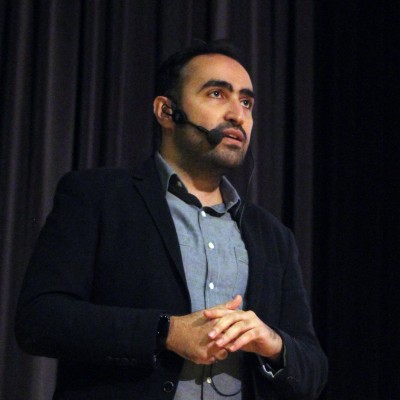 Financial Services
Financial Services
- Insights
- Technology
- Article
Small Steps, Big Gains: Kaizen in Technology Delivery Excellence

Every unused hour of engineering effort is a silent cost.
- Half of IT projects still finish late, proof that delivery friction persists
- Real progress begins when teams treat development journey—not tools—as the primary product
- Kaizen turns one-time fixes into an enduring habit of measurement and improvement
The Timeless Appeal of Kaizen
Imagine the spark of a new product idea lighting up a conference room. Decks circulate; architects sketch possibilities, and delivery leaders commit to bold timelines, confident that mature enterprise platforms and proven tooling will carry the concept swiftly into production where it can start creating value. Yet the road from that first brainstorm to a live release twists through a crowded and complex path: a product manager launches the idea, a product owner weighs it against a flood of similar requests and market signals, architects plus governance and security teams reshape the blueprint, analysts dissect the details, engineers build, and operations finally wrestle the service into production. Each hand-off is another speed bump on the way to value, and the cumulative drag is stark:
- Nearly half of all technology projects still miss their intended dates. (1)
- 69% of developers lose eight or more hours each week to inefficiencies. (2)
- 86% of technology leaders now believe they cannot attract or retain top talent without a better developer experience.(3)
What emerges is not a tooling gap. It is a discipline gap—a lack of consistent practices to squeeze waste out of every stage of delivery without launching another all-or-nothing transformation program.
Kaizen, the Japanese philosophy of continuous small improvements, offers a realistic answer. Instead of heroic transformation programs, it asks teams to spot one wasteful step, fix it, measure the gain, then move to the next.
At DefineX we make that habit stick by first smoothing the delivery flow—removing friction from permissions, environments, feedback loops—so that each small Kaizen win land on stable rails instead of shifting sand. Continuous improvement is powerful; continuous improvement on a friction-free runway is transformational.
Before exploring how we engineer that clear runway, let’s first revisit the philosophy that gives each step its purpose.
From Factory Line to Code Line
Born on Japan’s factory floors in the 1950s, Kaizen—meaning “change for better”—took shape inside Toyota’s Production System. Influenced by W. Edwards Deming’s post-war quality teachings, it championed small, daily improvements driven by frontline workers rather than top-down mandates. That shop-floor discipline proved so scalable that its principles now guide everything from hospital operations to modern software pipelines.
Lean Software Development and Agile both echo that Kaizen mindset. Lean removes waste and speeds learning. Agile breaks work into short iterations that feed on constant feedback. Together they give Kaizen a natural home in software, where flow and adaptability rule.
While methodologies and toolchains play a critical role, real progress often stalls when organizations fail to link these practices to end-to-end value. Kaizen reminds us that tools and methods succeed only when their incremental wins compound across the entire value stream. But current measurement practices often focus on narrow technical counts and overlook the broader journey. Achieving Technology Delivery Excellence requires more than just agile rituals or automated pipelines. It demands a framework that connects tools and methods to tangible outcomes—one that enables small improvements to scale, sustain, and align with strategic goals.
Turning Friction into Force: The Architecture of Delivery Excellence
At DefineX we approach this challenge of technology delivery as an ecosystem rather than a checklist. At its centre sits Developer Experience, where day-to-day friction is most visible and most acute. From that nucleus five mutually reinforcing building blocks radiate outward — secure SDLC controls, developer experience, platform engineering, AI supported delivery and upskilling talent, as illustrated in the figure below.

Together they create a flywheel that converts small Kaizen wins into structural advantages. Our internal modelling suggests that, when fully adopted, this architecture can lift engineer engagement by up to 60%, unlock 15% of hidden capacity, and reduce time to market by 10%.
The system operates through a disciplined, repeatable loop. It begins with persona-based journey mapping that exposes where value leaks occur along the delivery path. From there, we move to quantified baselining, using more than 30 metrics across speed, stability, quality, and satisfaction. Impact mapping then links every friction point to customer or business outcomes, turning abstract irritations into a visible cost curve. This drives action. A prioritized backlog and a clear implementation roadmap translate insight into improvements, while a governance rhythm keeps the cycle turning so gains do not evaporate between quarterly reviews. Crucially, each building block feeds data into the same loop, allowing small, local improvements to amplify across the entire Software Development Life Cycle.
By labelling every source of friction, attaching a measurable cost, and mapping it on shared journeys, organizations convert everyday delays into an actionable improvement backlog. That single act of naming is the first step in a Kaizen loop that gradually transforms scattered efforts into Technology Delivery Excellence.
Practical Steps for Putting Kaizen to Work
Metrics by themselves cannot move code; people and process must act on them. At DefineX, we have found that teams can convert the numbers into momentum without launching a heavyweight transformation by focusing on four practical, proven moves.
- Stand-up a compact DevEx team. Form a small, empowered group to coordinate improvement efforts, track delivery data, and report progress to the existing steering cadence. Whether structured as a central team, embedded within squads, or a hybrid of both, the mission is clear: protect developer time and improve visibility into delivery health.
- Walk the journey, again and again. Run regular workshops to revisit the developer journey map, timing every new pause from laptop provisioning to production release. Fresh friction points surface as products, platforms, and regulations evolve. These reviews ensure that blind spots stay short-lived.
- Keep the scoreboard alive. Blend DORA speed-and-stability metrics with SPACE signals of satisfaction and flow, then keep the dataset current as needs evolve. If a metric no longer predicts outcomes, drop it. If a new blocker emerges, add one. The point is alignment and insight, not volume.
- Refresh the culture that fuels improvement. Rotating hack-days, small-scope competitions, and public recognition give teams permission to experiment. Quick-win sprints—automated access, scripted environment setup, shared test catalogues—rarely take more than two weeks yet free hundreds of engineer-hours for the roadmap.
These steps are light enough to start in the next sprint, but disciplined enough to survive reorganizations and leadership changes. They represent Kaizen in action: small, sustained steps that unlock meaningful progress.
Measurable Impact in the Field
DefineX has applied this playbook with more than 3,500 engineers across major banks and digital organizations, delivering tangible business outcomes:
- Major Turkish bank (1,500+ engineers): A dedicated DevEx team identified and prioritized key friction points, generated a total estimated ROI exceeding $4.7M USD, including $2.1M in quick-win time savings and $2.4M in projected mid-term value.
- Tier-one bank (1,000+ engineers): Value-stream mapping exposed 16,000 man-days of inefficiency across the SDLC. A two-year implementation roadmap is now tracked in the same governance cadence as release risk and audit items.
- Mid-size bank (400+ engineers): The first scan revealed 10,000 man-days of potential gains. Six months into execution, baseline metrics confirm the first phase is delivering as planned, and the improvement backlog continues to shrink with each governance review.
Based on DefineX benchmarks for elite delivery performance, organizations that adopt a structured DevEx approach typically observe:
- Test automation coverage exceeding 80%,
- Median code review response times below three hours,
- 10% improvement in time-to-market over sustained delivery cycles.
These are not isolated peaks but achievable norms when improvement becomes embedded in governance and delivery rhythms.
Start Small, Measure, Repeat
None of these results began with a grand transformation program. They began with a clear understanding of where friction existed. The organizations that walked this path with DefineX started by identifying all major sources of delivery friction. From there, they built a targeted roadmap. Then, step by step, they measured the impact of each, improved it, and reinvested the gains into the next improvement.
That is Kaizen in technology delivery: not transformation by decleration, but progress by discipline. Small purposeful steps that compound into enduring advantage.
SOURCES:
- (2018). Pulse of the profession®In-depth report: Success in disruptive times. Project Management Institute.
- Atlassian (2024) State of Developer Experience Report,
- Atlassian (2024) State of Developer Experience Report,

Explore deep-dive content to help you stay informed and up to date
 Financial Services
Financial Services
 Technology
Technology

